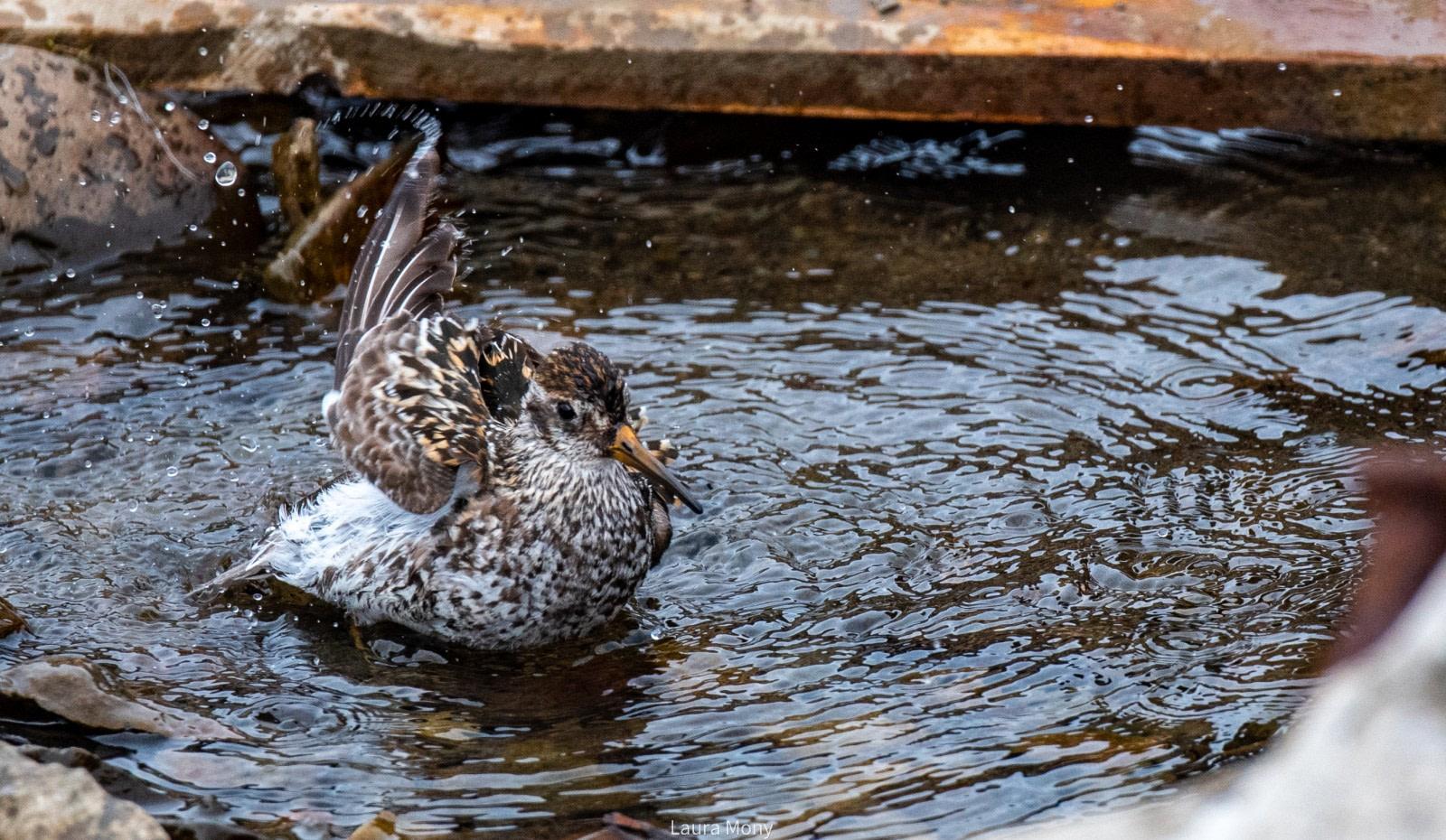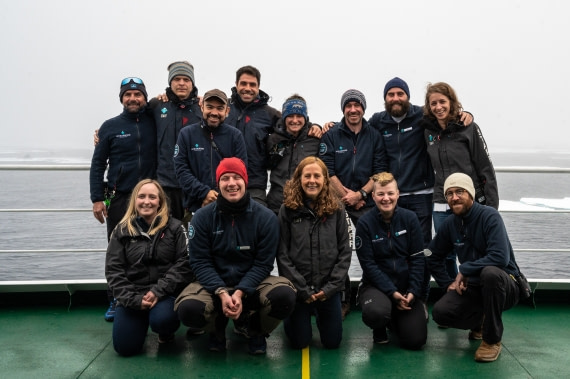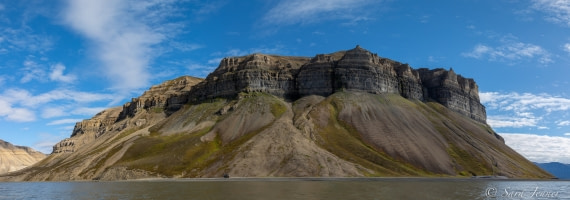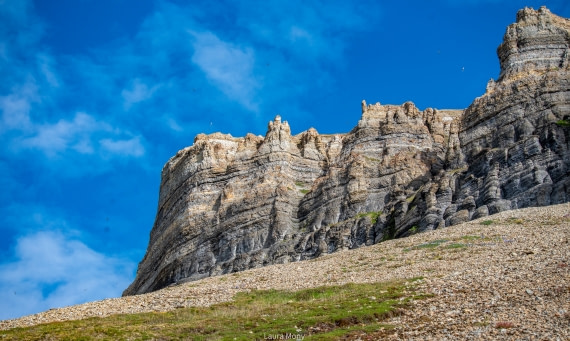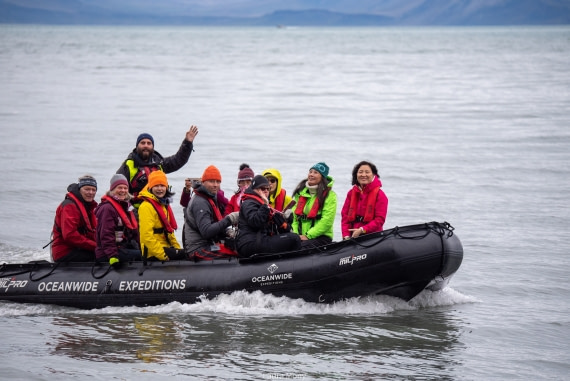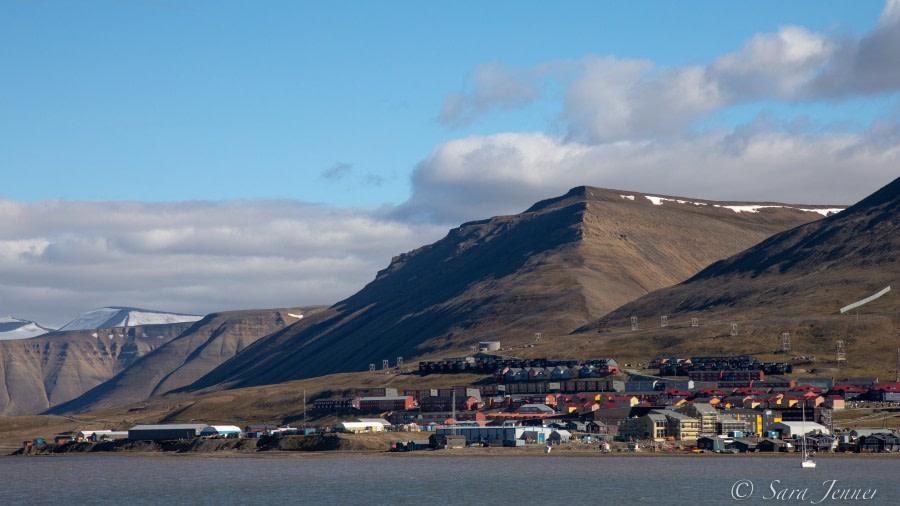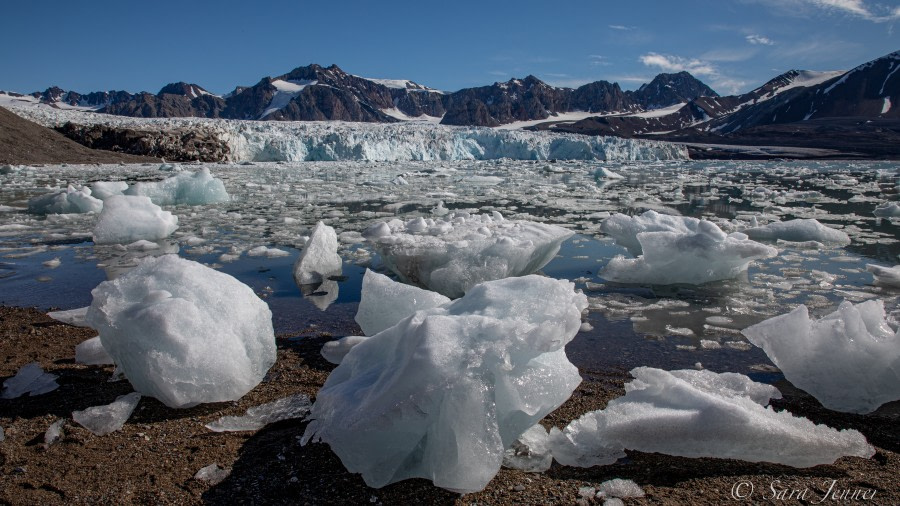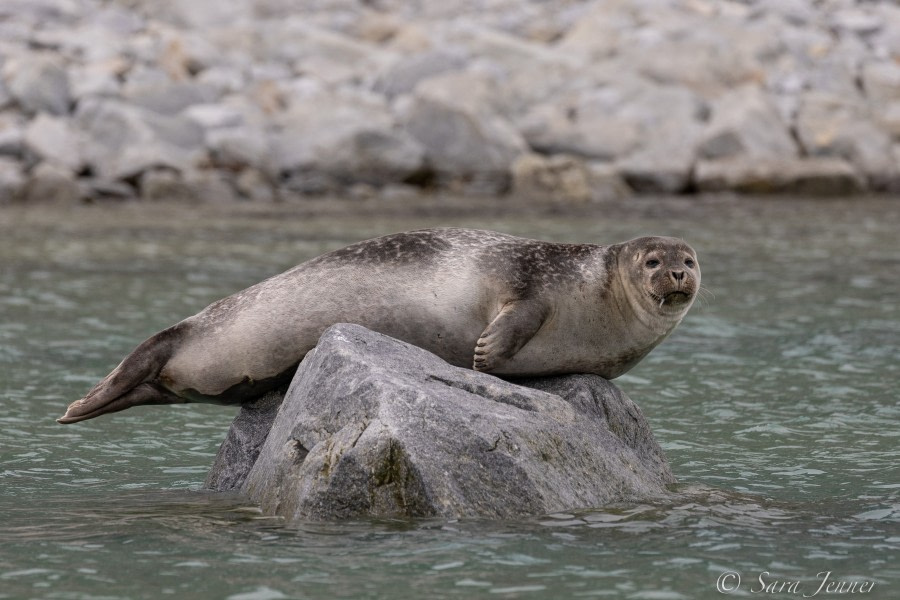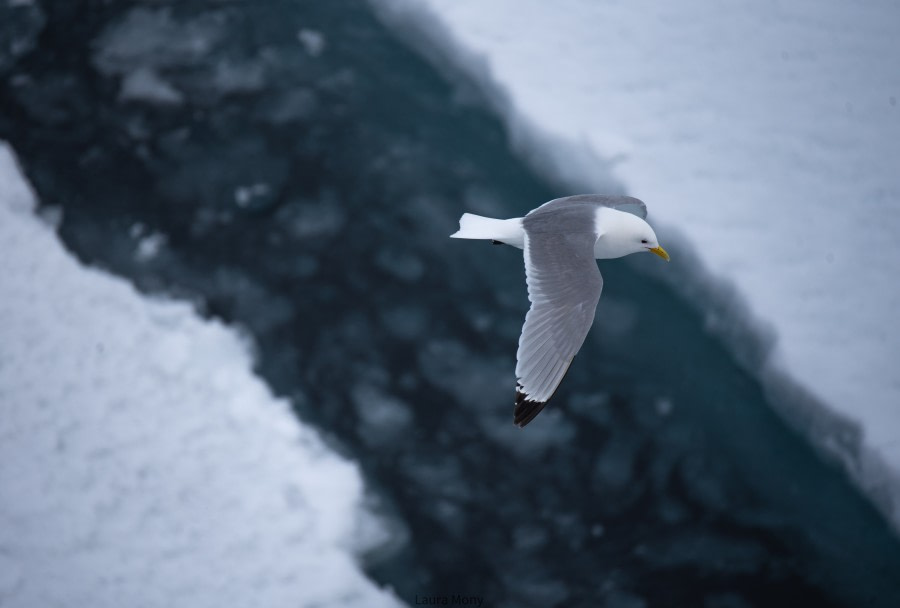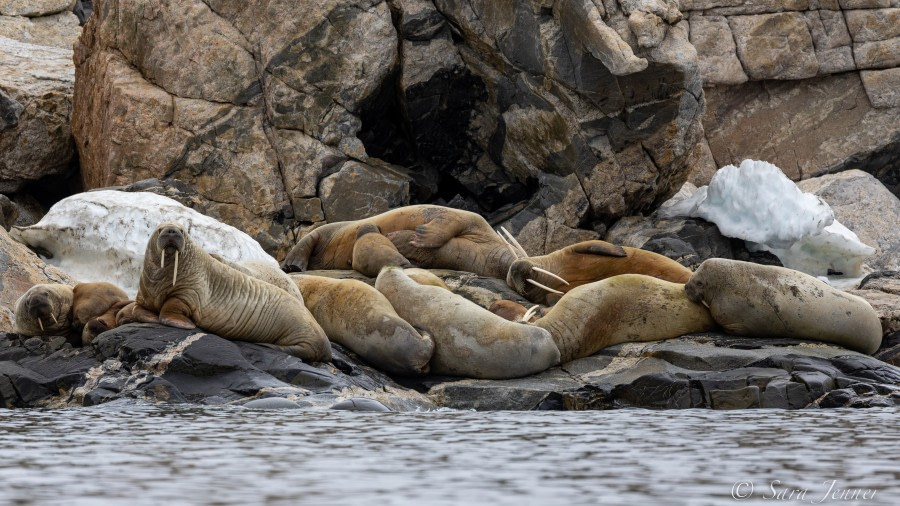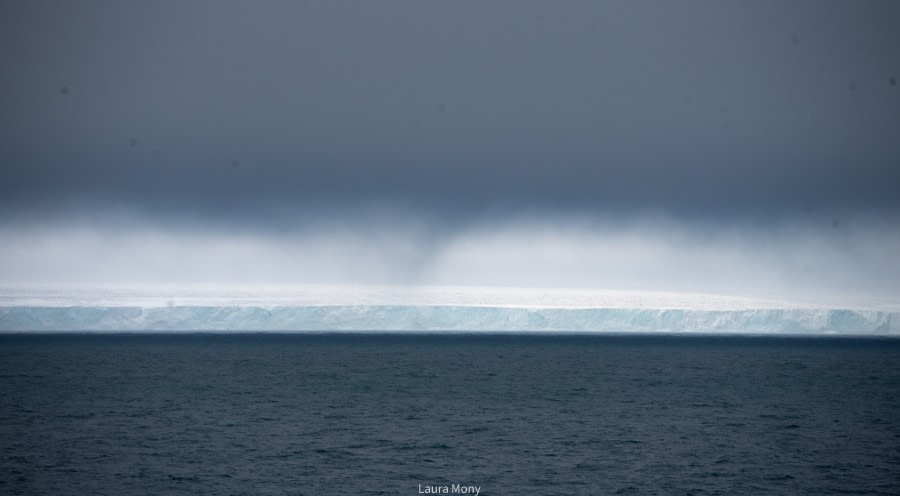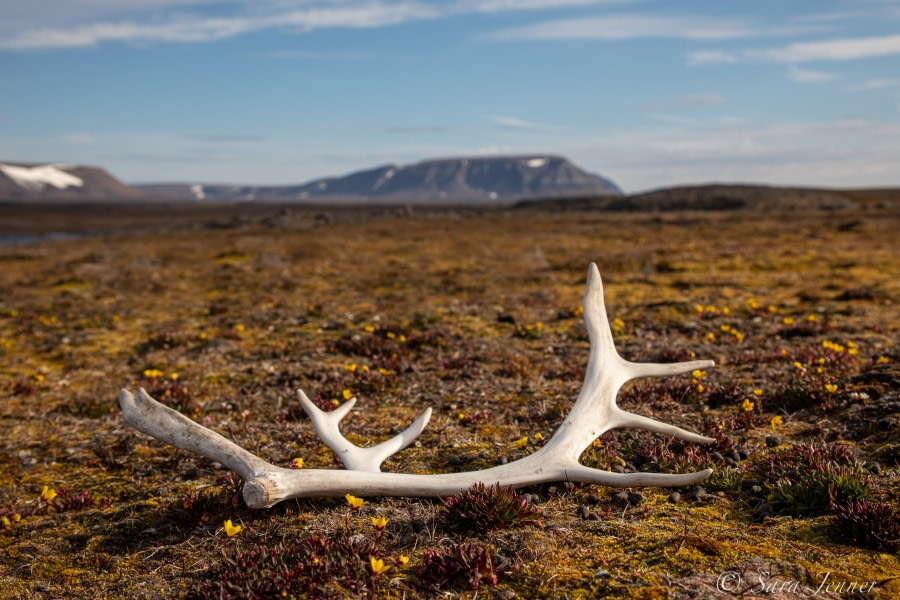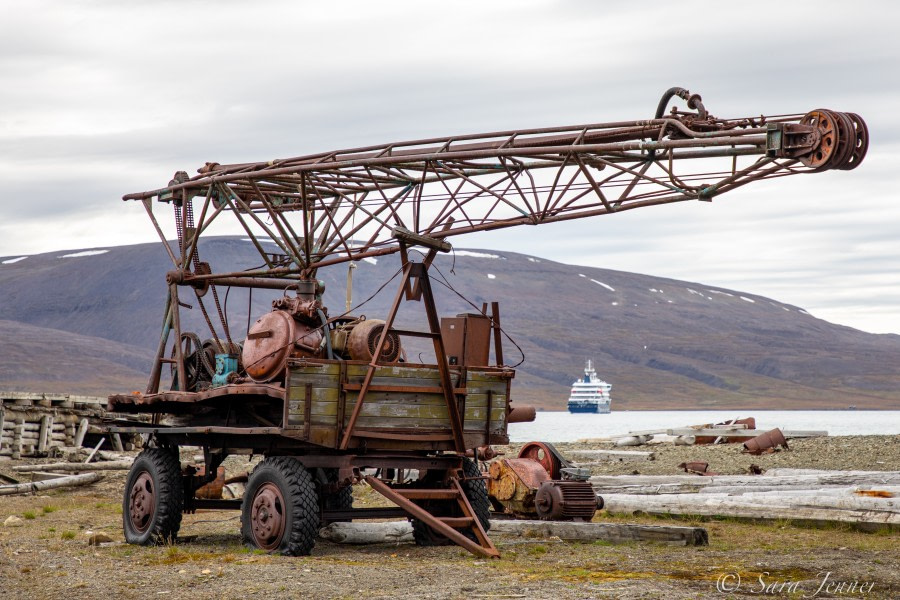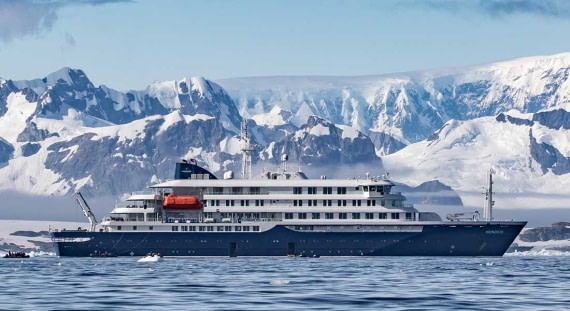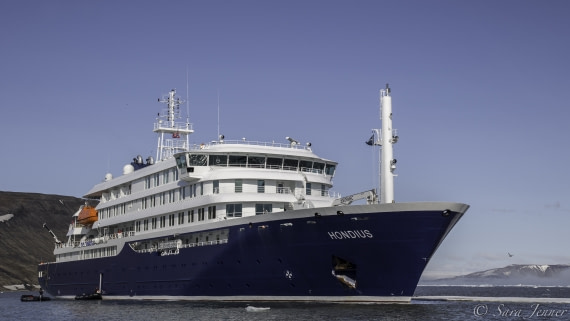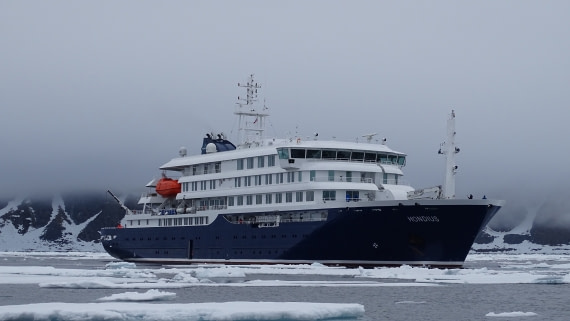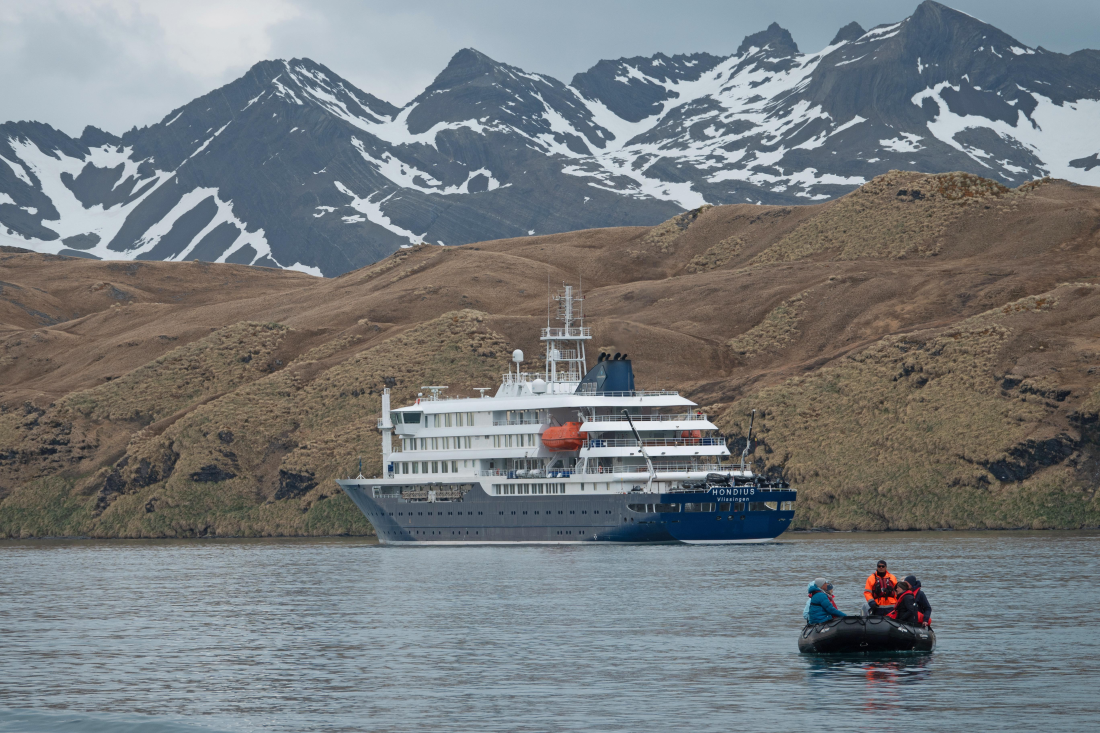| Datum: | 07.07.2022 |
| Position: | 78°14.0’ N, 015°37.4’ E |
| Wind: | SE 4/6 |
| Wetter: | Clear Sky |
| Lufttemperatur: | +4 |
Our Arctic adventure was due to begin, under a bright blue sky, warm weather for a city so far north, and slight wind. Our first introduction to expedition was at the pier where the expedition team picked us and our luggage up by zodiac. We had to enjoy a short drive before boarding MV Hondius, our house for the next week, anchored in the harbor of Longyearbyen. As we got onboard, we were welcomed by the hotel department and Albert, the receptionist, who handed us the keys of our room. As we were discovering the vessel, we naturally made our way to the observation lounge were some coffee and tea were waiting for us, but also where we will have the best view of the surrounding landscape. We knew we will spend as much time as we can in this space looking out the window, making sure we will not miss any sightings of wildlife. Happily, aboard and reunited with our luggage, Expedition Leader (EL) Eduardo and Chief Officer Matei commenced the mandatory ship safety briefing at 17:15pm, during which guests were shown how-to put-on life jackets and floatation suits, stored in cabins in the event of an emergency situation. As part of the briefing an abandon ship alarm was sounded - we all made our way to our muster stations, either in the Observation Lounge (station B) or Restaurant (station A). Once all guests had arrived wearing their lifejackets correctly, the responsible for each muster station gave us the instruction in case of a real, but very unlikely, emergency. Afterwards, at 18:15pm, guests received a warm welcome and orientation briefing from our Hotel Manager William and EL Eduardo – an overview of life on board and how to access important information concerning our daily schedules. This was followed by our first delicious dinner in the restaurant prepared by the Ralf, our onboard chef, and its galley team. Finally, one last mandatory briefing was announced about the rules to follow when you get onshore. The expedition team introduced themselves and we were happy to hear all their background in various area of expertise like biology, geology, history and even geopolitics. It was followed by a little video produced by AECO, the Association of Arctic Expedition Cruise Operators, which explained how to preserve this pristine environment. As the day ended, many of us headed to bed to be well rested for our first full day of expedition tomorrow.
